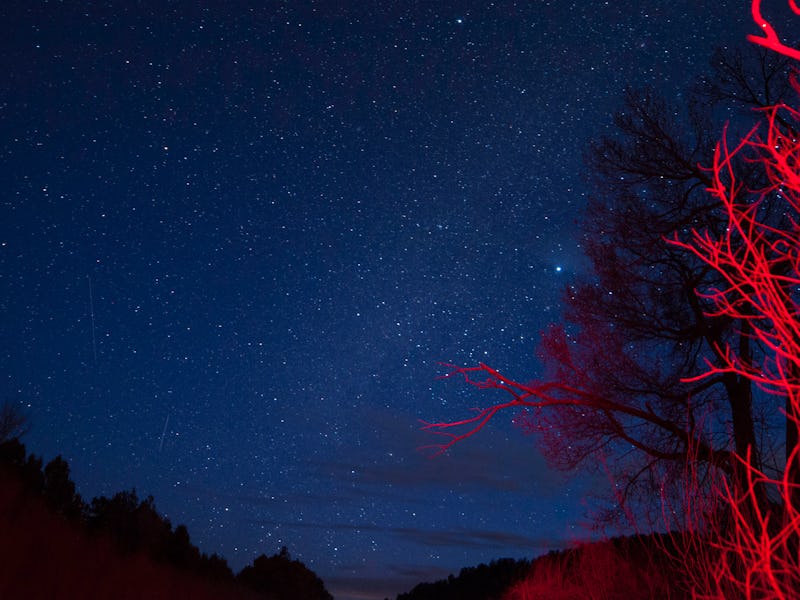The Fall Equinox: What You Can Expect to See in the Night Sky
How to locate some planets and a red star.

Friday marks the fall equinox, the half way point between the longest day of the year and the shortest, and the official beginning of the autumn season. And although the fall equinox reminds us that winter is coming, there are some real benefits coming for skywatchers in the increasing darkness.
First a little about the fall equinox. Compared to summer and winter equinoxes, during the fall equinox the sun shines directly on the equator, giving us nearly equal amounts of night and day. And while we are welcoming fall in the northern hemisphere, Friday conversely marks the beginning of spring in the southern hemisphere.
As we edge toward the winter equinox, the nights will get longer. Depending on how far north you live, over the course of September, North Americans can lose anywhere from 20 minutes to four hours of daylight at the most northern tip of Alaska.
It's time to grab your SAD lamp. This graphic by climatologist Brian Brettschneider shows just how much daylight we lose over the course of September.
Although that’s not good news for our intake of vitamin D, it will provide some extra darkness for scoping what’s happening in the sky above.
On Friday and Saturday night, the moon and Jupiter can be seen close together in the western sky shortly after sunset. Jupiter is big and bright, so it should be easy to see with the naked eye once you locate the crescent moon, but binoculars can’t hurt either. Mid-northern latitudes will get about one hour to see Jupiter following sundown. There won’t be too much moon time, though. As with every September equinox, in northern latitudes the moon will follow the sun below the horizon shortly after it descends. Its distance from the sun will increase over the following days, improving its presence and height in the night sky over the coming nights.
Speaking of which, on September 25, Saturn and the supergiant star Antares will also make an appearance, sitting just south of the moon. The moon will be to the left of the sunset in the northern hemisphere (above the sunset in the southern hemisphere), and you’ll be able pick out Antares and Saturn based on their color. Saturn will be gold, while Antares will appear to be red. Stars also tend to sparkle to the eye while planets appear to have a more steady glow, so that can help you tell the two apart.
If you liked this article, check out this video on how light pollution affects the planet.